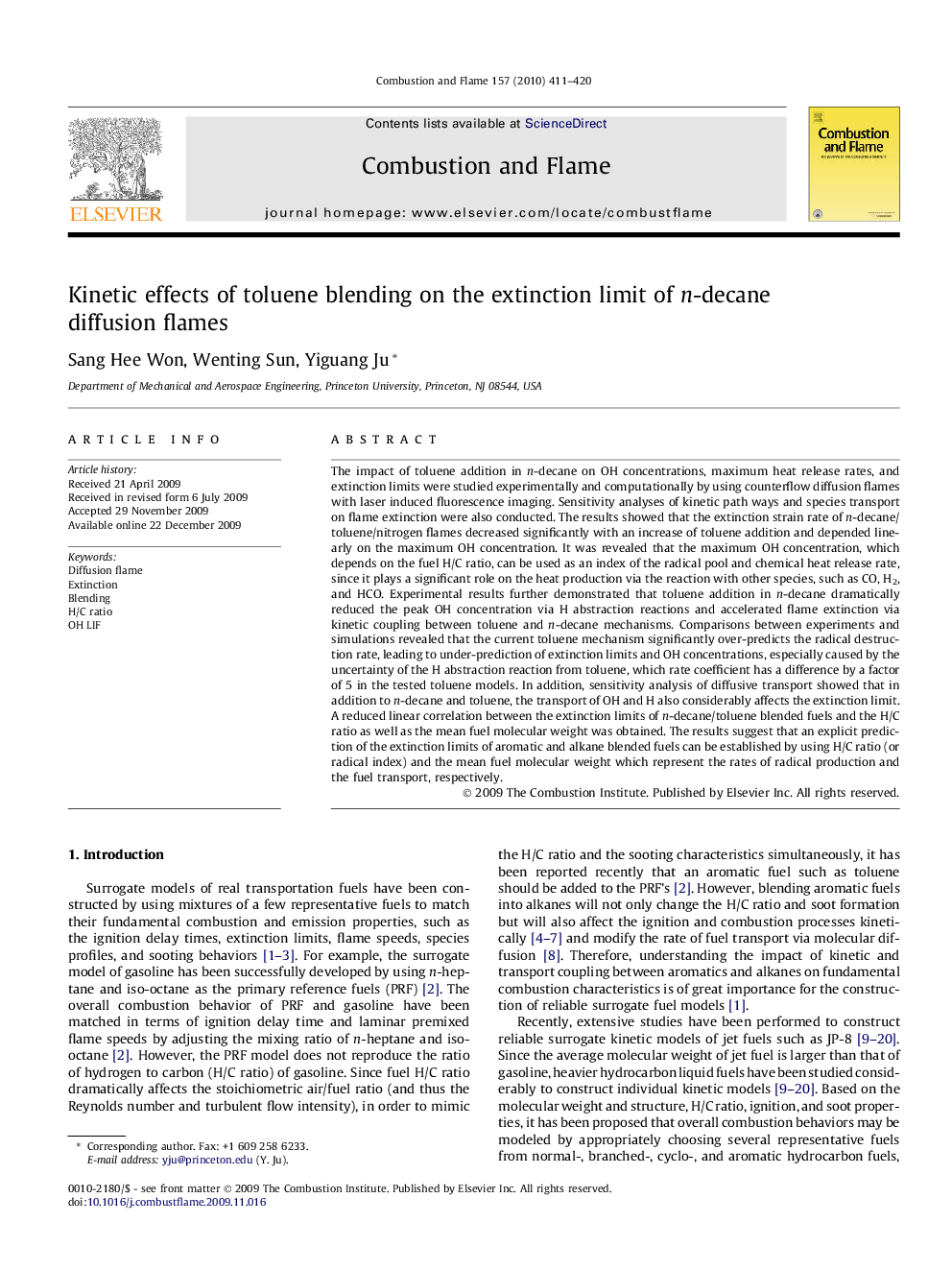| Article ID | Journal | Published Year | Pages | File Type |
|---|---|---|---|---|
| 169672 | Combustion and Flame | 2010 | 10 Pages |
The impact of toluene addition in n-decane on OH concentrations, maximum heat release rates, and extinction limits were studied experimentally and computationally by using counterflow diffusion flames with laser induced fluorescence imaging. Sensitivity analyses of kinetic path ways and species transport on flame extinction were also conducted. The results showed that the extinction strain rate of n-decane/toluene/nitrogen flames decreased significantly with an increase of toluene addition and depended linearly on the maximum OH concentration. It was revealed that the maximum OH concentration, which depends on the fuel H/C ratio, can be used as an index of the radical pool and chemical heat release rate, since it plays a significant role on the heat production via the reaction with other species, such as CO, H2, and HCO. Experimental results further demonstrated that toluene addition in n-decane dramatically reduced the peak OH concentration via H abstraction reactions and accelerated flame extinction via kinetic coupling between toluene and n-decane mechanisms. Comparisons between experiments and simulations revealed that the current toluene mechanism significantly over-predicts the radical destruction rate, leading to under-prediction of extinction limits and OH concentrations, especially caused by the uncertainty of the H abstraction reaction from toluene, which rate coefficient has a difference by a factor of 5 in the tested toluene models. In addition, sensitivity analysis of diffusive transport showed that in addition to n-decane and toluene, the transport of OH and H also considerably affects the extinction limit. A reduced linear correlation between the extinction limits of n-decane/toluene blended fuels and the H/C ratio as well as the mean fuel molecular weight was obtained. The results suggest that an explicit prediction of the extinction limits of aromatic and alkane blended fuels can be established by using H/C ratio (or radical index) and the mean fuel molecular weight which represent the rates of radical production and the fuel transport, respectively.
